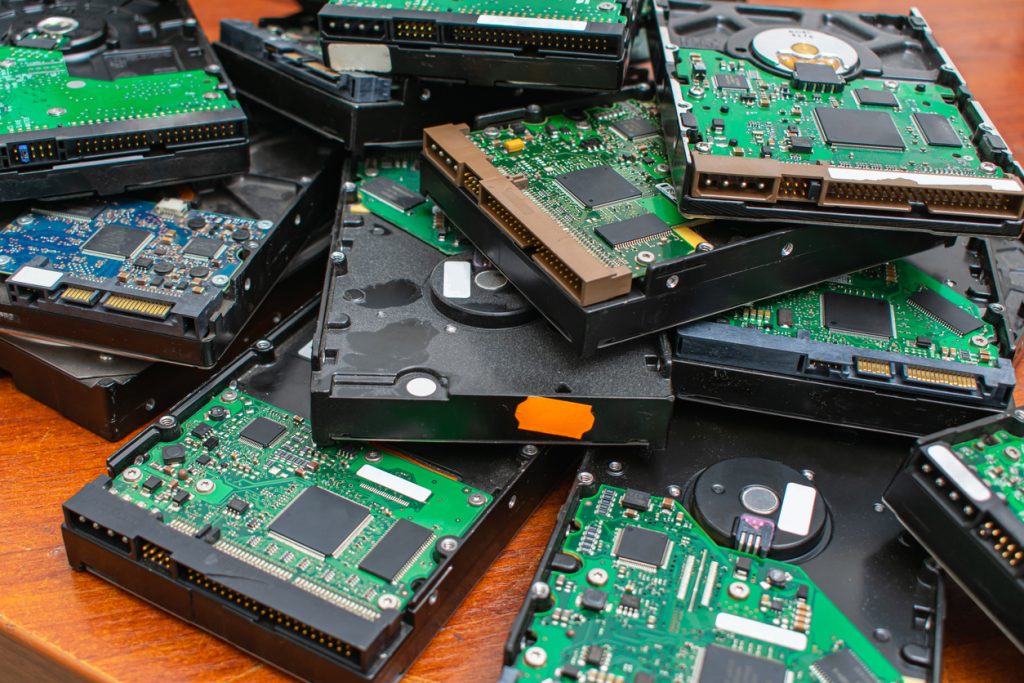Shielding Against the Storm

Shielding Against the Storm: Protecting Your Electronics from EMPs
This article provides a comprehensive guide on how to protect against an EMP, including:
- An explanation of EMPs
- Historical instances of EMP events
- Potential threats of EMPs
- DIY methods for protection
- The Role of Faraday Cages
- Key materials used in electromagnetic shielding
- Safeguarding data from EMPs
- A summary of preparedness for EMP events.
Understanding Electromagnetic Pulses (EMPs)
Electromagnetic Pulses (EMPs) are intense bursts of electromagnetic radiation that can disrupt, damage, or destroy electronic devices and systems. These pulses can originate from both natural and human-made sources. Natural EMPs can be caused by solar flares or geomagnetic storms, while human-made EMPs can result from the detonation of a nuclear weapon or the use of EMP bombs.
Please note that High Altitude EMPs, called HEMPs, can damage electronics not plugged directly into the electrical grid, but a solar flare will not. A solar flare affects mostly long transmission lines, so handheld electronics may still work perfectly fine, although with the power grid being down, you’ll have much bigger problems.
For example, in 1989, a powerful geomagnetic storm caused a complete power collapse in Quebec, demonstrating the real-world consequences of natural EMP events. The first human-caused EMP occurred in 1962 from a high-altitude nuclear weapon test, highlighting the significance of this event in understanding the potential impact of EMPs on electronic devices and infrastructure.
When an EMP occurs, it induces strong electric currents in electronic circuits, potentially destroying semiconductor devices and microelectronics. The impact of an EMP on electronic devices and critical infrastructure is significant, as it can lead to widespread disruption, loss of communication, and damage to essential systems.
For instance, an EMP attack has the potential to disable power grids, disrupt telecommunications, and render electronic devices inoperable, posing a threat to national security and critical infrastructure. Therefore, understanding the nature and sources of EMPs is essential in developing effective protection measures to mitigate the potential impact of these electromagnetic events on electronic systems and infrastructure.
Moreover, the 1859 Carrington Event, a powerful geomagnetic storm caused by a solar coronal mass ejection, resulted in widespread electromagnetic disturbances, causing telegraph systems to fail and auroras to be visible at low latitudes. This historical event serves as a compelling example of the disruptive potential of natural EMPs, emphasizing the need for protective measures to safeguard electronic systems from such occurrences. Understanding the historical context and impact of EMP events is crucial in comprehending the urgency of developing robust protection strategies to mitigate their potential effects on electronic devices and critical infrastructure.
Historical Instances of EMP Events
An important historical instance of a human-caused EMP event took place in 1962 during the Starfish Prime test, a high-altitude nuclear test conducted by the United States. The detonation of a nuclear warhead at an altitude of approximately 250 miles above the Pacific Ocean resulted in an unexpected and widespread disruption of electrical and communication systems over a vast area.
This event is significant in understanding the potential impact of EMPs on critical infrastructure and electronic devices, as it demonstrated the far-reaching consequences of a deliberate high-altitude nuclear explosion.
Moreover, the 1989 geomagnetic storm that caused a complete power collapse in Quebec is a compelling example of the real-world effects of EMPs. Triggered by intense solar activity, this natural event led to a widespread and prolonged power outage, highlighting the vulnerability of power grids to natural electromagnetic disturbances.
The disruption experienced by Quebec due to this geomagnetic storm underscores the urgent need for protective measures to safeguard critical infrastructure and electronic systems from the adverse effects of EMPs, whether they are of natural or human-made origin. These historical instances underscore the pressing need for effective protection against EMPs to mitigate potential widespread disruptions to electronic devices and power grids.
Additionally, in 1859, the Carrington Event, a massive solar storm, caused unprecedented disruptions to telegraph systems and ignited widespread auroras, showcasing the profound impact of natural EMPs on communication infrastructure and the Earth’s magnetic field.
This historical event serves as a poignant reminder of the immense disruptive potential of solar-induced EMPs, highlighting the importance of developing resilience and protection strategies to mitigate the impact of such occurrences on modern electronic systems. These historical instances provide valuable insights into the impact and consequences of EMP events, emphasizing the critical need for proactive protection measures to ensure the resilience of electronic infrastructure.
Potential Threats of EMPs
The potential damage caused by Electromagnetic Pulses (EMPs) to electronic devices and power grids is a significant concern that has garnered attention due to the potentially catastrophic impact. EMPs can disrupt and even permanently damage electronic devices, including those vital for critical infrastructure, posing a serious threat to modern society.
In the case of an EMP attack, whether through a nuclear detonation or a solar event, the resulting power outages and infrastructure disruption could lead to widespread chaos and economic damage, highlighting the urgency of protection measures.
One historical example that underscores the potential threats of EMPs is the 1989 geomagnetic storm that caused a complete power collapse in Quebec, Canada. This real-world instance demonstrated the vulnerability of power grids and electronic devices to natural electromagnetic disturbances, showcasing the disruptive power of EMPs and the need for robust protective measures.
Furthermore, the first human-caused EMP in 1962 from a thermonuclear weapon serves as a poignant reminder of the devastating consequences that such events can have on electronic systems and infrastructure, further emphasizing the critical need for EMP protection.
Moreover, the resilience of certain electronics, such as solar panels, non-electric appliances, manual appliances, vintage electronics, and small portable devices, is a notable aspect to consider in the face of an EMP attack. While the impact of an EMP can be widespread and severe, these electronics may offer a degree of survivability, potentially serving as crucial resources in the aftermath of such an event. Understanding the potential threats posed by EMPs is essential in developing comprehensive protection strategies and ensuring the resilience of electronic systems and critical infrastructure.
Additionally, the potential consequences of an EMP attack on electronic devices and power grids highlight the need for proactive protection measures to mitigate the potential impact of such events. The disruption and damage caused by EMPs have the potential to lead to significant economic losses, hamper critical infrastructure, and pose challenges to national security.
Protecting against EMPs: DIY Methods
When safeguarding electronic devices from the potentially devastating effects of an EMP, do-it-yourself (DIY) methods can serve as initial protective measures. One common DIY approach involves using readily available materials such as tinfoil, steel garbage cans, and metal roofs to shield electronic devices from the impact of an EMP. For instance, wrapping devices in several layers of tinfoil or placing them inside a metal container like a steel garbage can can be a rudimentary protection against the electromagnetic radiation emitted during an EMP event.
Another unconventional DIY method suggested involves using microwaves to shield electronic devices. Some individuals propose placing devices inside a microwave, believing that the metal casing of the microwave could potentially block electromagnetic radiation from reaching the enclosed electronics. However, it is important to approach these DIY methods with caution and acknowledge that while they may offer some level of protection, their effectiveness in fully safeguarding electronic devices from the impact of an EMP is not guaranteed.
Despite the availability of DIY methods, it is crucial to recognize that professional solutions such as Faraday Cages and bags provide a more reliable means of safeguarding electronic equipment from the impact of EMPs. While DIY methods can be an initial step in protecting electronic devices, the use of certified and tested protection solutions like Faraday bags is essential for comprehensive protection against the potentially catastrophic effects of an EMP.
The utilization of DIY methods for EMP protection underscores the resourcefulness and creativity of individuals seeking to safeguard electronic devices from potential electromagnetic disturbances. While these methods may offer initial protection against the impact of EMPs, it is important to consider the limitations and uncertainties associated with DIY approaches, underscoring the need for certified protection solutions to ensure comprehensive resilience against the potential effects of EMPs.
The Role of Faraday Cages in EMP Protection
Faraday Cages play a crucial role in safeguarding electronic devices from the detrimental impact of electromagnetic pulses (EMPs). These enclosures are constructed using conductive materials such as copper or aluminum, forming a protective shield that prevents electromagnetic fields, including those generated by EMPs, from penetrating the interior space.
By effectively blocking these electromagnetic fields, Faraday Cages shield the enclosed electronic devices from the destructive effects of EMPs, ensuring their functionality and integrity.
For instance, during a solar storm, the Earth’s magnetosphere can be bombarded with charged particles, potentially leading to a geomagnetic storm. In 1989, a powerful geomagnetic storm caused a complete power collapse in Quebec, highlighting the real-world consequences of EMPs on critical infrastructure and electronic systems.
This event underscored the importance of implementing protective measures such as Faraday Cages to mitigate the impact of EMPs on vital electronic equipment and systems, preventing widespread disruptions and damages.
The availability of professional Faraday cases and bags underscores the significance of proactive measures in protecting critical electronic infrastructure from the potentially catastrophic effects of EMPs, emphasizing the practical application of Faraday Cages in ensuring the resilience and functionality of electronic systems.
Furthermore, the effectiveness of Faraday Cages in safeguarding electronic devices from EMPs is exemplified by their utilization in critical infrastructure and military applications. These protective enclosures are employed to shield essential electronic equipment from the impact of potential electromagnetic disturbances, ensuring operational continuity and readiness in the face of potential EMP events.
The widespread adoption of Faraday Cages in diverse sectors underscores their proven effectiveness in providing robust protection against the disruptive effects of EMPs, highlighting their crucial role in safeguarding electronic infrastructure and systems.
Key Materials Used in Electromagnetic Shielding
Graphene, a versatile and highly conductive material, is crucial in enhancing protection against EMPs through its use in Electromagnetic Interference Shielding products. This advanced material contributes to developing effective shielding solutions that can bolster the resilience of electronic devices and critical systems against the potential impact of EMPs.
Furthermore, smart paints, harnessed for electromagnetic shielding and heat dissipation, have garnered attention for their potential in safeguarding electronics from EMPs. These innovative paints are designed to provide a protective barrier against electromagnetic interference, offering an additional defense layer for electronic equipment and infrastructure.
Additionally, using advanced materials such as conductive polymers and metal alloys in electromagnetic shielding products underscores the diverse range of materials employed to enhance protection against EMPs. These advanced materials contribute to developing robust and reliable shielding solutions, ensuring the resilience and functionality of electronic devices and systems in the face of potential electromagnetic disturbances.
The ongoing exploration and utilization of diverse materials in electromagnetic shielding highlight the commitment to developing comprehensive protection strategies against the disruptive effects of EMPs, underscoring the multifaceted approach to enhancing the resilience of electronic infrastructure.
Safeguarding Data from EMPs
Protecting data from the impact of an EMP is crucial in maintaining the integrity of essential information and ensuring the continuity of operations. One practical insight for safeguarding data from EMPs is the utilization of offline backups. Storing critical data on physical media such as external hard drives, DVDs, or offline servers can protect against the potential destruction of digital information caused by an EMP. Keep in mind that a high altitude EMP can destroy electronics not connected directly to the grid, so these devices should be protect by keeping them in an EMP and/or Faraday bag, or in an EMP cage.
In addition to offline backups, community-based strategies for EMP data protection often emphasize the importance of encryption. By encrypting sensitive data, individuals and organizations can add an extra layer of security, making it more challenging for unauthorized parties to access and misuse the information in the event of an EMP attack.
This approach is frequently discussed within online communities focused on data security and disaster preparedness, where members exchange knowledge and expertise on mitigating the risks associated with potential EMP events. These practical insights and community-driven strategies serve as valuable resources for individuals and entities seeking to fortify their data against the disruptive effects of an EMP.
Moreover, the utilization of offline backups and encryption strategies for safeguarding data from EMPs underscores the collaborative efforts and community-driven initiatives to enhance the resilience of digital information against potential electromagnetic disturbances.
These practical insights and best practices, shared within online communities and forums, provide valuable guidance for individuals and organizations seeking to mitigate the risks associated with EMP events, underscoring the importance of proactive measures in safeguarding critical data from potential disruption and loss.
Summary and Preparedness for EMP Events
It is imperative to comprehend the nature and potential sources of electromagnetic pulses (EMPs) to fully grasp the need to safeguard electronic devices and critical infrastructure against their disruptive effects [2]. EMPs can be caused by natural occurrences such as geomagnetic storms or human-made events like nuclear detonations, highlighting the diverse origins of this threat.
For instance, the 1989 geomagnetic storm that led to a complete power collapse in Quebec, the Carrington Event in 1889, as well as the near miss of a large solar flare in 2012, are all poignant examples of the real-world consequences of EMPs, underscoring the critical need for protection measures.
Furthermore, when it comes to “Shielding Against the Storm”, the collaborative efforts and interdisciplinary research focused on EMP protection underscore the ongoing commitment to developing comprehensive strategies and solutions to mitigate the impact of EMPs on electronic devices and critical infrastructure.
The utilization of advanced materials, innovative technologies, and community-driven best practices exemplifies the multifaceted approach to enhancing the resilience of electronic infrastructure against the potential disruptive effects of EMPs, underscoring the collective dedication to safeguarding essential systems and data from potential electromagnetic disturbances.







